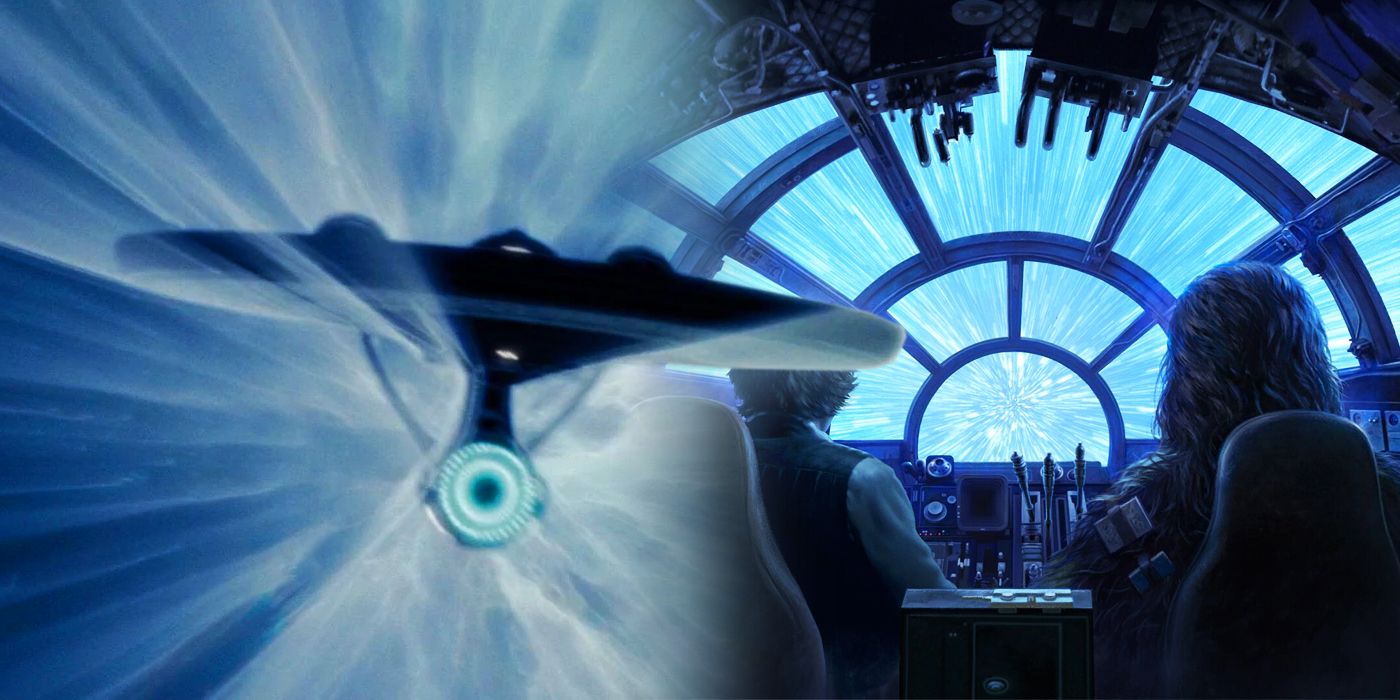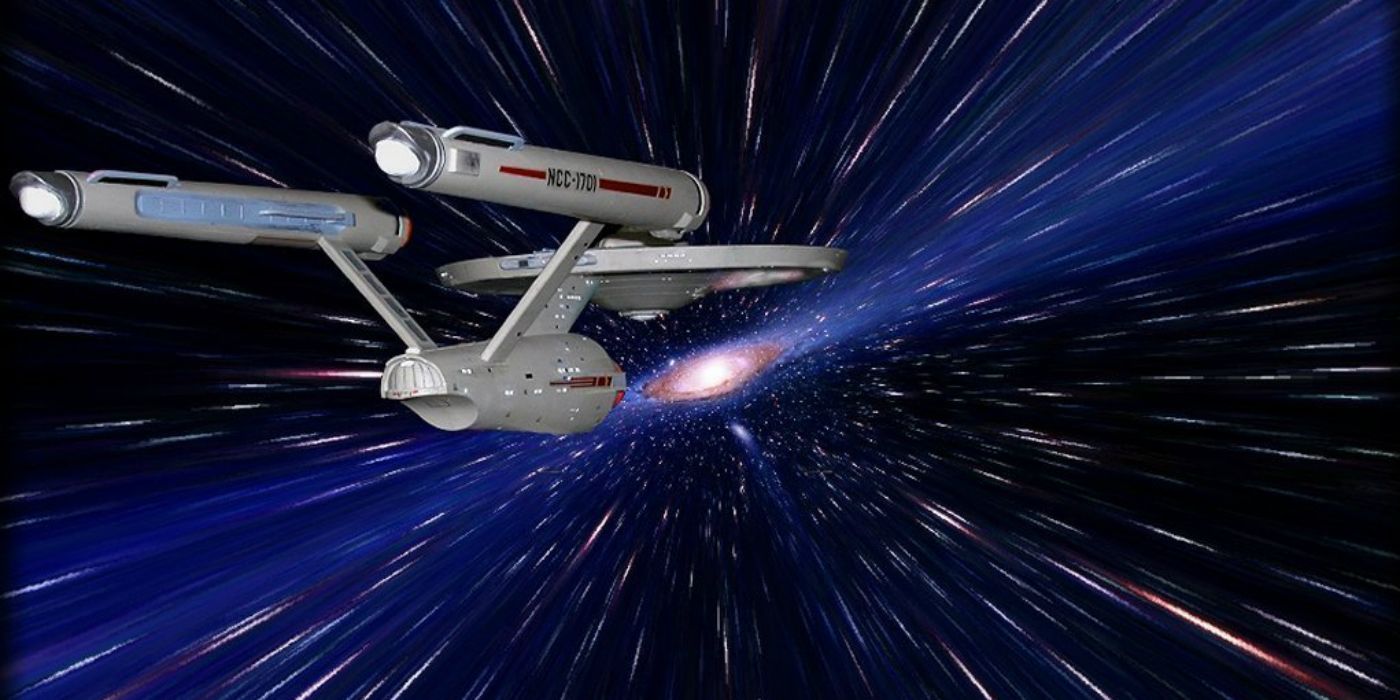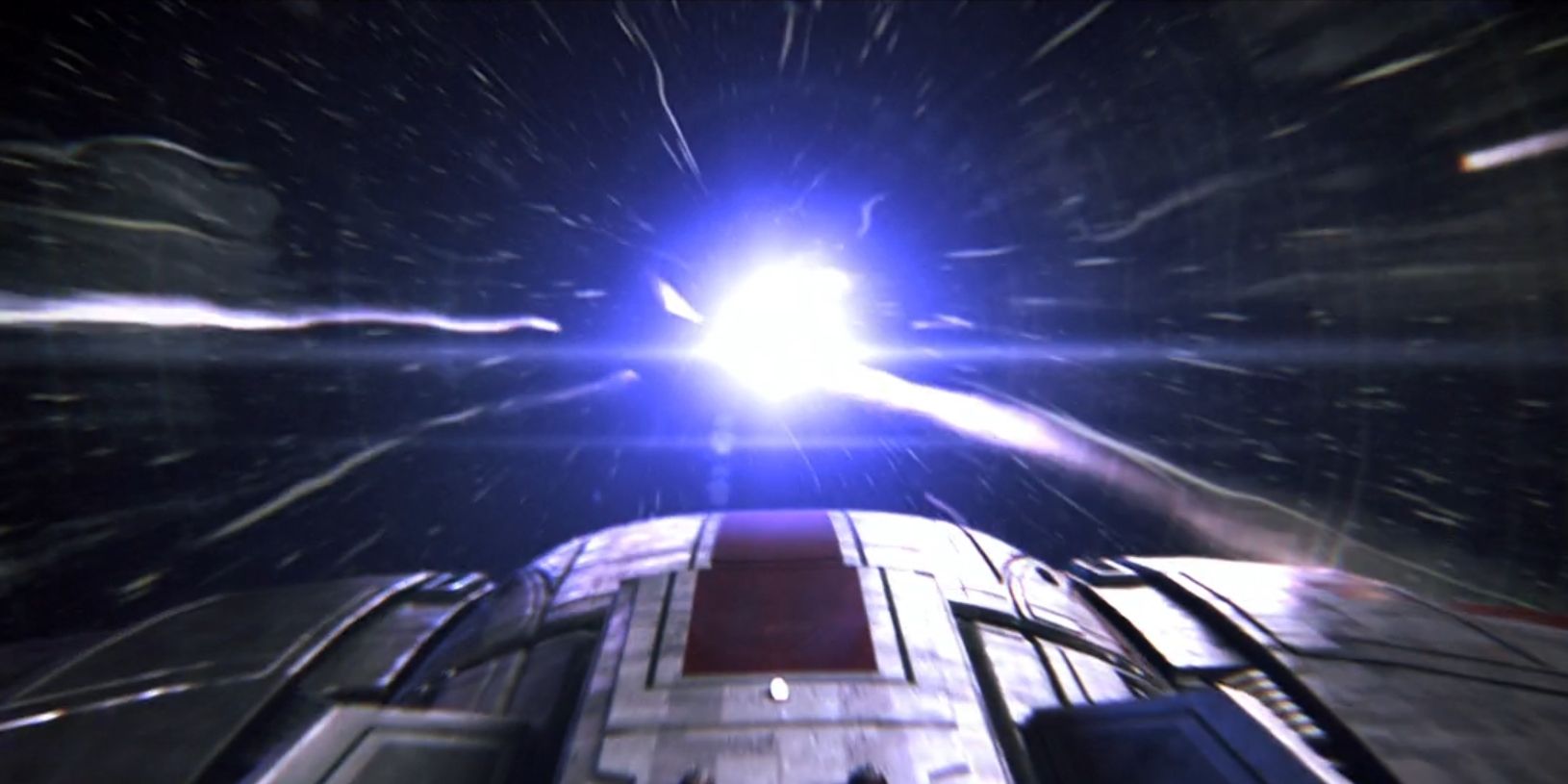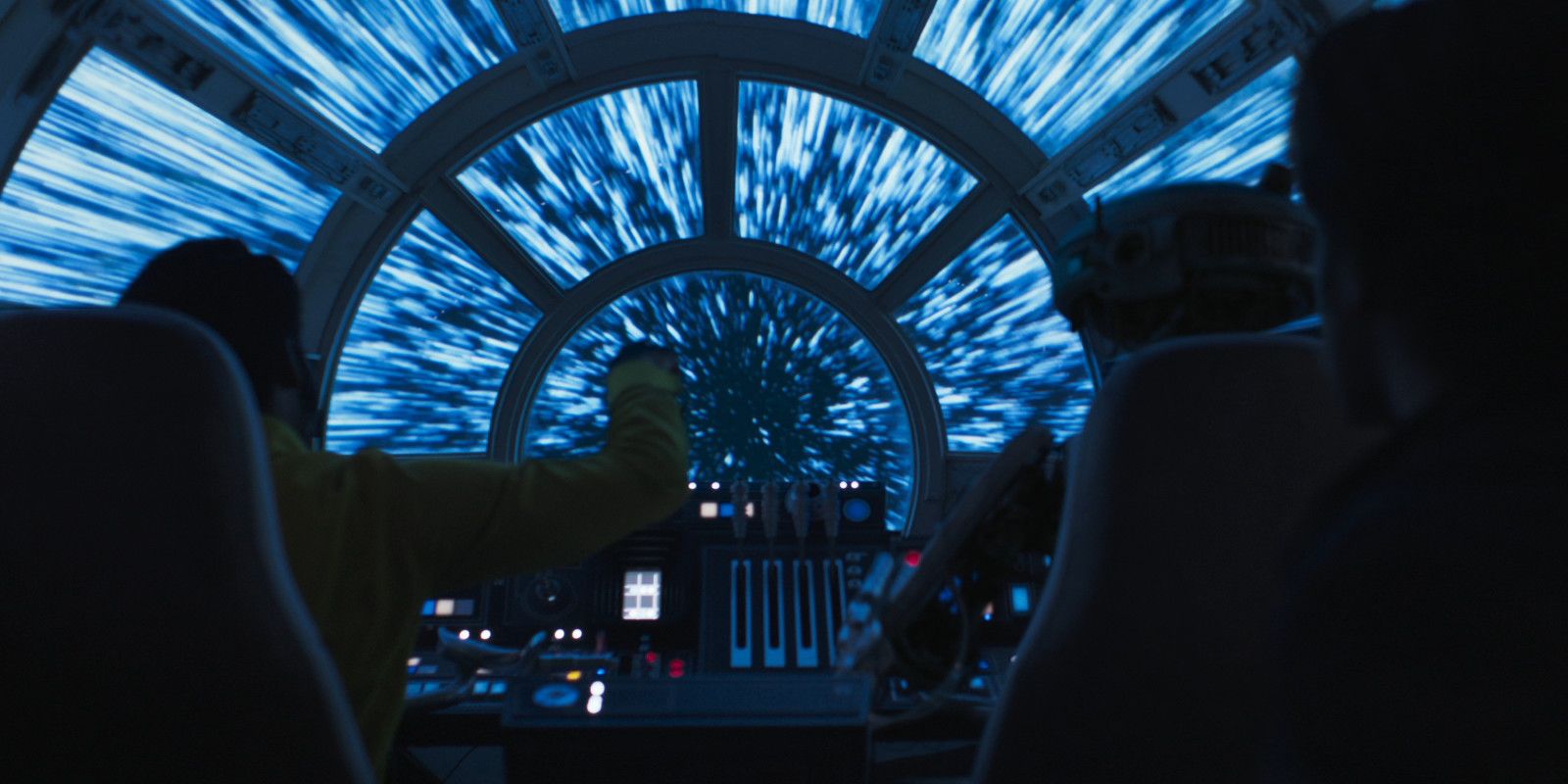Here's how fast Star Trek's warp speed actually is, and how it compares to other forms of travel in science-fiction, such as Star Wars' Hyperspace. When Gene Roddenberry began to work on Star Trek, he was faced with a thorny problem: he wanted the show to have some semblance of scientific accuracy, but at the same time, he also needed the Starship Enterprise to be able to move at incredible speeds.
The solution was the warp drive (or, as it was actually called in Star Trek's pilot episode, the hyperdrive). This brings matter and antimatter into collision in order to generate a phenomenal amount of power, and the reaction is regulated by a rare mineral called dilithium. The matter/antimatter reaction allows the starship to travel faster than light - several multiples faster.
But just how fast is warp speed? The original Star Trek series was unclear, but over time the franchise has established clear rules. Let's explore them.
Warp Speed In The Original Series
The original Star Trek series was wildly inconsistent in its portrayal of warp speed, with the concept basically used as a plot device to get from A to B at whatever speed an episode's writer wanted. Warp speeds of 10 or higher were treated as unsafe, at least until the Enterprise was refitted in Star Trek: The Motion Picture, when it gained the ability to safely travel up to warp 12. The fastest warp speed shown on-screen was an alien vessel that could actually reach warp 35. All these inconsistencies clearly bugged Gene Roddenberry, and as a result warp speed was recalibrated for Star Trek: The Next Generation in order to create something a little more well-structured.
Warp Speed In The Next Generation Era
According to the Star Trek Encyclopedia, in simple terms, the new warp speed factor 1 is the exact speed of light, 299,792,458 m/s. Each factor above is a multiple of that warp speed, although what those values are vary depending on the show in question.
- Warp Factor 1 - 1x lightspeed
- Warp Factor 2 - 10x lightspeed
- Warp Factor 3 - 39x lightspeed
- Warp Factor 4 - 102x lightspeed
- Warp Factor 5 - 214x lightspeed
- Warp Factor 6 - 392x lightspeed
- Warp Factor 7 - 656x lightspeed
- Warp Factor 8 - 1,024x lightspeed
- Warp Factor 9 - 1,516x lightspeed
- Warp Factor 9.99 - 7,912x lightspeed
- Warp Factor 10 - Infinity
In theory, a ship traveling at warp 10 is moving so fast that it essentially exists in all places and all times simultaneously. It's only known to have been achieved once in the entire history of Star Trek, in the Star Trek: Voyager episode "Threshold". There, Tom Paris successfully traveled at warp 10, but the experience proved to have a transformative, evolutionary effect upon any organic matter. The crew of Voyager wisely ditched the idea, concerned about the consequences. It's worth noting that warp speeds seem to have been re-calibrated again in the future timeline glimpsed in "All Good Things," where two vessels are said to travel at warp 13. Presumably as technology became more efficient, Starfleet saw the value in creating a new scale with a wider range. In a technical note, science adviser Andre Bormanis suggested that in this future timeline, warp 15 would be the Threshold limit.
In truth, warp travel is usually little more than a plot device to help the Federation's starships jump across the galaxy at speed. Almost every sci-fi series has its own equivalent, simply because the alternative is to slow your story down for quite a while as the crew jumps from one star-system to another.
How Warp Speed Compares To Hyperspace
In Star Wars, for example, ships that break the speed of light are able to access another dimension called hyperspace. This is essentially another plane of reality, one where the laws of physics operate differently. By accessing hyperspace, a spaceship can move at a phenomenal speed; there are different classes of hyperdrive, which allow different speeds.
It's important to note that a journey through hyperspace can be disrupted; if a vessel encounters the gravity shadow of a stellar mass, such as a planet, star, or black hole, they are ripped out of hyperspace. That's why the trip from Tatooine to Alderaan in Star Wars took 16 hours, which is actually pretty slow for a 10,000 light year journey in a ship with an illegal class 0.5 hyperdrive, and is roughly equivalent to Star Trek's warp 7. The dream scenario would be to acquire a hyperdrive of class 0.0, which would be analogous to Star Trek's warp 10.




